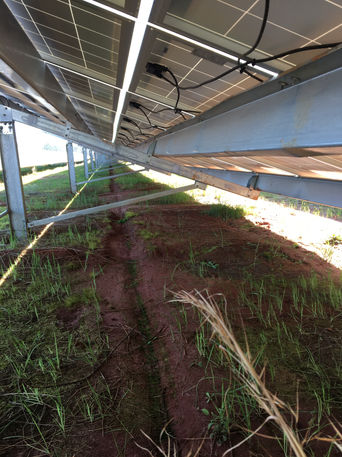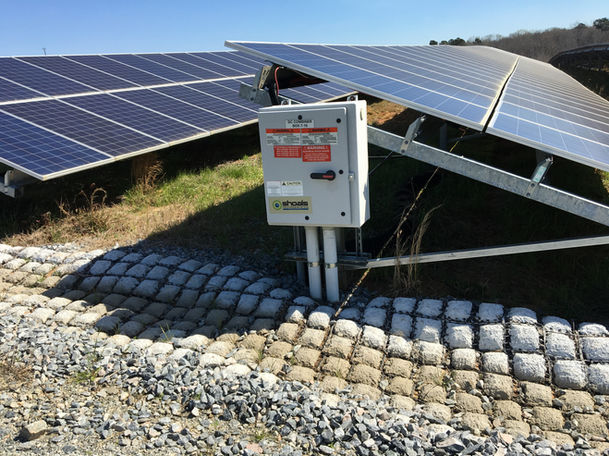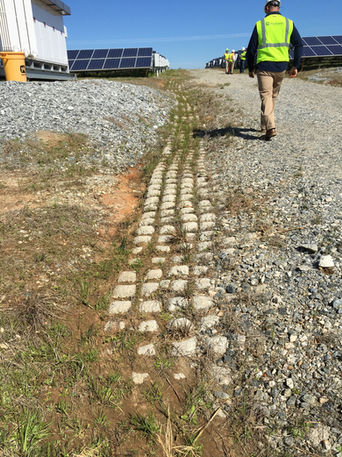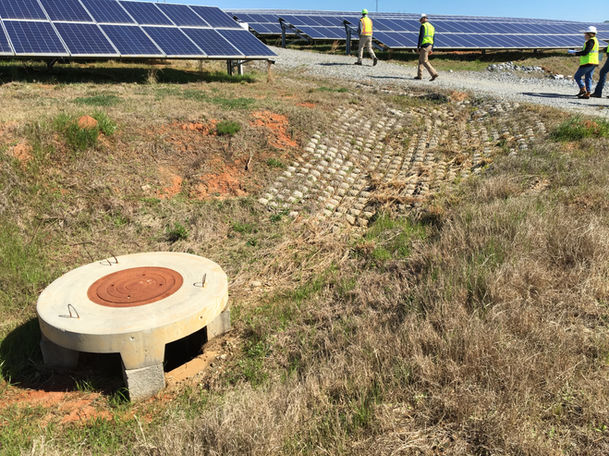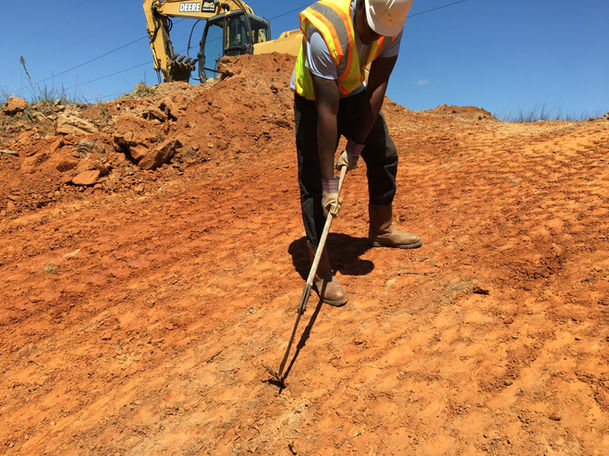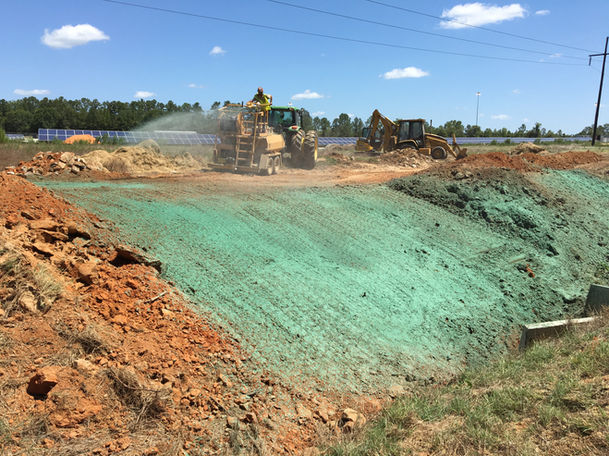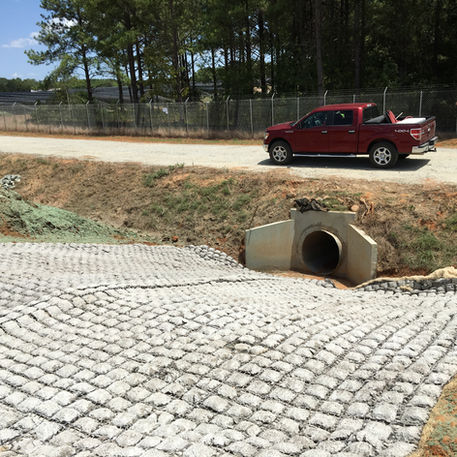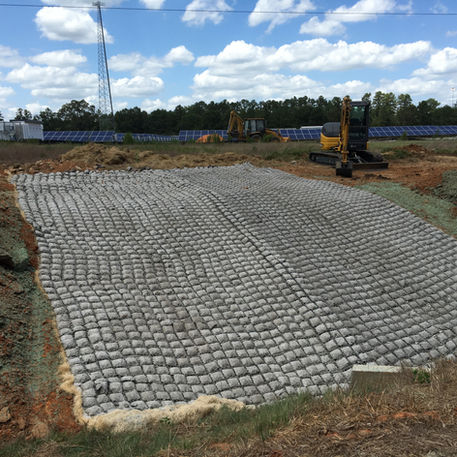Need help selecting the right FLEXAMAT? Try out Product Recommender.

Solar Farm Armoring
Clean, renewable solar energy has become a necessary part of our nation's strategy to improve the way we create and consume energy. Coast to coast, utility-scale solar installation projects are providing reliability, favorable rates and social responsibility for energy-intensive businesses, municipalities and utilities alike by leveraging the power of the sun.
The process of building a solar farm is complex. It can take years to go from the original design to a fully operational farm. Solar farms range in size from 8 acres to over 100 acres. The sites encounter unique environmental conditions. After the land acquisition, design and permitting have been completed, construction begins. One of the first steps in the construction process is erosion control measures. Sites may be near protected wetlands, streams and watersheds. Exposure to harsh weather and the soil disturbance during construction lead to erosion issues.
Erosion is one risk that workers must mitigate or fix when working with solar panels. These farms span several acres, with the structures covering most of that land. Underneath it all, the soil and dirt must stay in place. Otherwise, the structures could shift and become less efficient, or become damaged beyond function.
All forms of solar panel installation and management must include plans for erosion control. Water and wind are two of the biggest culprits of erosion. During high winds or strong storms, topsoil erodes and changes the landscape of the farm. If erosion exposes the electrical wirings, power failures can occur. If storms bring enough rain, mudslides can happen on a significant slope. Workers must be cautious of flat land, too, since it may be susceptible to flooding.
Vegetation is the best way to control erosion. The root structure of plants help lock the soil in place. Flexamat works with vegetation to provide reinforced, permanent armoring.
To mitigate against erosion on solar sites, the engineering teams specify Flexamat to armor slopes and channels that are susceptible to erosion. Site specific seed is spread prior to installing the Flexamat armor. Immediately upon installation, Flexamat stops erosion. Within the first growing season, the native vegetation thrives within the concrete mat.
Flexamat is also utilized on these sites as a base for access roads and low water crossings. The ability to drive over Flexamat is beneficial at these solar sites.

